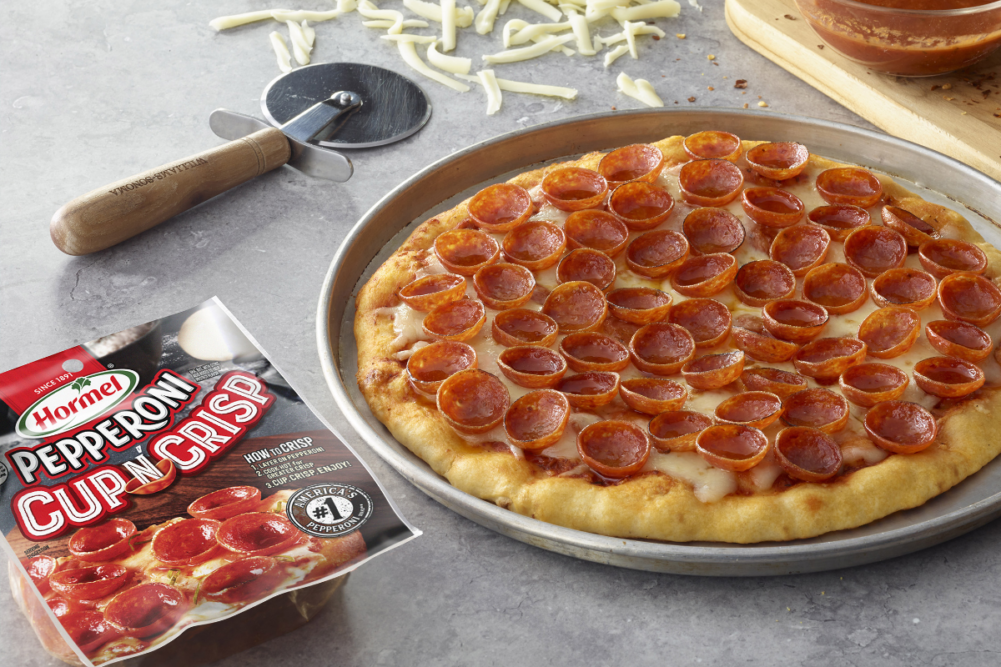Many believe that sliced pepperoni on pizza is meant to cup, which is when the edges curl upward during baking. The raised edges serve to contain the pepperoni fat as the meat cooks, preventing the rest of the pizza from getting greasy and sloppy. The cups have been described as a “grease chalice,” with the crispy edge possessing a bacon-like, melt-in-the-mouth crunch.
Cupping pepperoni has been on the rise and trending on pizzeria menus across the United States in recent years, especially in New York City, according to Hormel Foods Corp., Austin, Minn. The company is now making it easier for home pizza makers to prepare restaurant-quality pepperoni pizza with the introduction of Hormel Pepperoni Cup N’ Crisp, a first-of-its-kind retail pizza topping uniquely crafted to cup and crisp.
“Few things satisfy your senses and capture your attention more than a pepperoni pizza fresh out of the oven,” said Shane Ward, Hormel brand manager. “Hormel Pepperoni Cup N’ Crisp is intensely flavored and uniquely formulated to achieve just the right amount of cupping and the perfect crisp, creating an unforgettable experience when crafting pizzeria-style pizzas at home.”
Hormel Pepperoni Cup N’ Crisp can be perfectly baked hot in the oven, using a pizza stone or cooked outside on the grill. It comes in original and bold varieties.
Cupping is a function of how the sausage is stuffed, the casing and slice thickness. The best thickness will vary by product density. The goal is to have the edges curl toward the heat source, while the center remains flat, as it’s insulated by the cheese and dough. If it’s too thin, the whole slice curls. If it’s too thick, it’s too heavy to lift off.
The casing impacts the ability of the edges to lift off and cook before the whole slice of meat gets insulated and stays flat. You want to use a casing that shrinks fast, allowing for the lift.
Stuffing the casing impacts the striation of ingredients, including protein fibers. When meat flows into the casing following a “U” pattern, the sliced product curls in that shape. This flow is a function of the stuffing horn diameter and elasticity of the casing.


